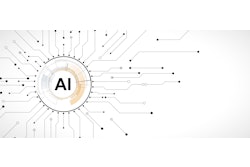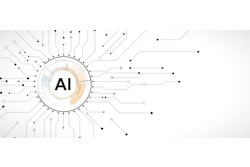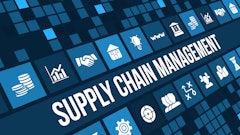
Artificial intelligence (AI) was once seen as a futuristic wildcard in the supply chain. Today, it’s foundational. According to McKinsey's 2024 Global Survey on AI, 75% of supply chain leaders have adopted AI-driven analytics—up from just 30% in 2020. From navigating geopolitical disruption to preventing costly cyber breaches, AI isn’t just enhancing supplier risk strategies—it’s transforming them.
What was once considered a futuristic perk is now a business-critical asset. Supply chain leaders are turning to AI not just to streamline operations but to build resilience, increase adaptability, and unlock strategic advantages. But what does that look like in practice? Here are several critical areas of the supply chain where AI isn’t just showing potential—it’s already delivering results.
Staying ahead of disruption
According to the Business Continuity Institute’s (BCI) Supply Chain Resilience Report 2024, nearly 80% of organizations experienced supply chain disruptions over the past year, with most facing between 1-10 such events. Survey respondents cited third-party failures as the most common source of disruption.
AI and supplier risk management software can help. These systems aggregate vast, diverse data, including weather forecasts, shipping schedules, social media, and global news, and then analyze patterns to detect emerging risks before they escalate. This level of foresight empowers supply chain teams to react early, or even preemptively, to events that might otherwise cause major delays or financial losses.
Consider the threat of a dockworkers’ strike on the U.S. East Coast in late 2024. For multinational companies, that disruption posed ripple effects far beyond American ports, impacting inventory availability in Europe, delaying manufacturing in Asia, and increasing costs globally. Instead of scrambling for solutions after the fact, AI-powered systems alerted some companies to the risk early, allowing them to adjust their logistics plans, re-route shipments, or tap alternative suppliers.
Minutes and even seconds can make a significant difference in success or failure when adjusting supply chain strategies. Companies armed with tools that can recommend and create real-time shifts have a significant advantage.
Cybersecurity: Defending the digital supply chain
In October 2024, a large consumer electronics manufacturer suffered a ransomware attack that disrupted its internal accounting systems and delayed earnings reporting, highlighting how even well-prepared global electronics firms can be caught off guard by cyber threats. In the aforementioned BCI study, cyberattacks were listed as the No. 2 cause of disruption.
AI is proving to be a powerful ally in cyber defense. Machine learning algorithms can analyze traffic patterns, detect anomalies, and flag suspicious activity in real time—often before human analysts would even notice something was wrong. Crucially, these tools can also assess the security posture of third-party suppliers, giving companies visibility and control over their entire digital ecosystem.
By continuously scanning for vulnerabilities and automatically enforcing compliance standards, AI helps organizations stay ahead of increasingly sophisticated threats. And in industries where just-in-time production or lean inventories are the norm, protecting digital infrastructure is inseparable from maintaining business continuity.
Staying ahead of regulatory minutiae
Regulatory non-compliance can lead to significant financial and reputational harm. For instance, AI-driven systems can track and flag compliance risks tied to forced labor laws like the Uyghur Forced Labor Prevention Act (UFLPA), which has halted thousands of shipments at U.S. ports. To minimize these risks, businesses must thoroughly vet their suppliers, collect certifications, and use automated systems to trigger action when issues arise.
A strong supplier compliance program is key to staying ahead of these challenges. Regular audits and assessments can identify potential risks early, ensuring suppliers are in alignment with regulatory expectations. Equally important is maintaining visibility into evolving regulations so companies can proactively adjust and protect against compliance failures. AI-driven tools can take the guesswork out of compliance and raise flags to not only supplier issues but shifts in regulation as well.
According to apexanalytix internal benchmarking, companies with a fully automated, AI-supported supplier onboarding process complete 2.5 times the number of risk checks compared to companies that use a primarily paper-based process for onboarding suppliers.
Preventing financial leakage is another key benefit of an AI-driven strategy. Implementing a strong payment processing system with built-in safeguards helps detect and stop overpayments or duplicate transactions before they occur. Lastly, gaining visibility into your organization’s spending patterns allows for smarter budgeting and resource allocation. By implementing tools that can automatically identify cost-saving opportunities across departments, businesses can operate more efficiently without compromising performance.
Turning risk into resilience
The next evolution of supplier risk strategy isn’t about reacting faster—it’s about predicting sooner. AI is enabling a shift from retrospective analysis to continuous resilience. For forward-thinking supply chain leaders, the time to act isn’t in the next disruption. It’s now.
What we’re witnessing now is not just AI showing promise, it’s AI delivering on what once felt like hypotheticals. From mitigating disruptions and forecasting demand to optimizing operations and securing digital environments, AI is helping organizations move from chaos to clarity.
In short, companies embracing AI aren’t just surviving supply chain volatility; they’re leading through it.



















